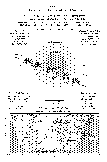

- - text and links as of last publication - -

For this second total Moon eclipse, Moon is passing plain south of the Earth's umbra and thus this total eclipse has a duration of 25 minutes only. It may be assumed that the eclipse will be plainly brighter than the eclipse of May and may be expected to have a bright rim at the south of the Moon. This special grazing geometry is due to the fact that this eclipse is the last of a Saros (it's the last total eclipse of Saros 126; all following will be only partial eclipses)
Timing data for this eclipse are:
| P1 (first penumbral contact) | 22:15:09 UT |
| U1 (first umbral contact) | 23:32:30 UT |
| U2 (beginning of total eclipse) | 01:06:16 UT |
| U3 (end of total eclipse) | 01:30:48 UT |
| U4 (last umbral contact) | 03:04:34 UT |
| P4 (last penumbral contact) | 04:21:57 UT |
Mid-totality is at 01:18:23 UT
Semi-Durations:
| Penumbral | 3h 03 m 24 s |
| Umbral | 1h 46 m 02s |
| Total | 0h 12m 16s |
Eclipse will be invisible for Australia, Japan, New-Zealand, totally visible for Europe, Western Africa broadly understood, Brazil, north-easternmost USA, eastern Canada; visible at Moonrise, at various stages, for most USA and western South America; visible at Moonset, at various stages, for Asia, Middle East and Eastern Africa. At mid-totality, the Moon's southern limb is grazing the umbra's edge at 0.6 ' and the northern limb is at 23.4' from the center of the shadow. The thumbnail below leads to detailed circumstances (path, visibility) of this eclipse. The map is courtesy Fred Espenak, NASA/Goddard Space Flight Center (for more material about this eclipse and about lunar or solar eclipses, see Fred Espenak's Eclipse Home Page). About how a Moon eclipse works and how to observe one, see the tutorials "Moon Eclipses" and "Observing a Moon Eclipse". The second thumbnail leads to an animated .gif which shows how the eclipse will unfold (outer circle limits the penumbra, inner circle the umbra) (based on Cartes du Ciel, Patrick Chevalley)
 |  | click for eclipse path and maps (left); click to an eclipse animated gif (right) |
Observation Reports: the webmaster of the site had the chance to have good weather (and to be in France, where the eclipse was observable in its entirety ;-). This was a fine Moon total eclipse and shadow was really deep, even if, as forecast, there was a lighter zone in direction of the umbra's edge, due to the configuration of the eclipse. Here is the complete report: observation (outside any astronomical consideration) could begin only at 0h 40 French time (23:40 UT) as U1 (first umbra contact) had already taken place and the penumbral phase had already unfolded. What was striking was that the shadow was already well present, and dark. The development toward totality was fine: Moon became crescent-shaped, and the shadowed part became visible naked-eye. At 1h 11 French time (00:11 UT), we estimated the shadow at L0 on the Danjon scale (idem naked eye at 00:15 UT). The show was fine as a kind of lighter rim was surrounding all the Moon's edge. In binoculars, one could see that the southern part of the Moon was lighter, as announced. The ingress into the totality phase was interesting too, as the Moon glided of sort into the shadow, due to the peculiar configuration of the eclipse. The show clearly became remarkable when only a thin Moon's crescent was left. At totality's beginnings (U2) the shadow is dark and grey (L1 or L0). During totality, with binoculars, details are visible and the shadow is deemed grey ; naked-eye it is deemed orange. As forecast by Espenak there was a lighter zone South of the Moon, in direction of the shadow's edge. After the official time of greatest eclipse, there was a more important darkening, and the color was about greys. We think we saw too shadow varying during totality. Then came U3. Moon seemed to take a lot of time to get out of the totality. The development until the last umbral contact (U4) was fine too, as Moon took a form of crescent. Umbra left Moon about Mare Crisium. Overall a Moon total eclipse is a very fine show and the naked-eye view of the orange-darkened Moon in middle of the sky is very striking and remarkable event
Website Manager: G. Guichard, site 'Amateur Astronomy,' http://stars5.6te.net. Page Editor: G. Guichard. last edited: 12/28/2010. contact us at ggwebsites@outlook.com